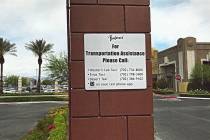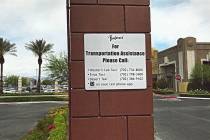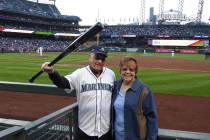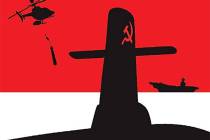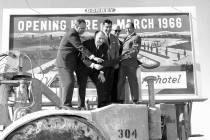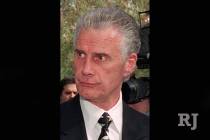From ‘Cuckoo’s Nest,’ Sheehan took flight as writer
For Jack Sheehan, inspiration to become a writer came from one source -- Ken Kesey's book "One Flew Over the Cuckoo's Nest," celebrating its 50th birthday this month.
"Nobody had close to the impact on me that he had," Sheehan said, citing the language, imagery, style, changing voices and complex layers of Kesey's work.
Now 62, Sheehan credits "Cuckoo's Nest" and Kesey's 1964 novel "Sometimes A Great Notion" as the life-changing spark that turned him from a business major to an English major.
Sheehan is prolific and has made a living writing since he was 23. He's working on his 18th nonfiction book, he edited two Las Vegas city magazines and has written countless freelance stories. Two of his screenplay projects are now under way; one is definitely being produced while another is likely. His subjects range from golf and sex to banker E. Parry Thomas and drug lord Jimmy Chagra.
"I studied 'Cuckoo's Nest' at the University of Oregon in 1969 in American lit. The novel was only 7 years old and was hugely popular," Sheehan said. "Both books were written when Kesey was in his mid- to late 20s, and at age 29, he was going to be America's great new novelist, the Michael Jordan of American literature."
To write his master's thesis on Kesey, Sheehan moved back to Eugene, Ore., knowing it would be difficult to arrange an interview with Kesey, but hopeful, and persistent.
Kesey was listed in the phone book. Sheehan called and reached Kesey's wife, Faye. "She was very pleasant and said: Ken's very busy, he's writing the screenplay for the movie, but call back again."
Sheehan did, and she delivered the same polite message three or four times. About the fourth call, Kesey came to the phone. They spoke for five or 10 minutes. Kesey proposed that Sheehan go to the special collections at the university library, where the rough draft of "Cuckoo's Nest" was kept, along with his notes. "Tell them I said it was OK."
Sheehan rushed to the library and said he had Kesey's permission to review the materials.
The librarian laughed.
She knew, as Kesey knew, Sheehan would need Kesey's written permission. Sheehan was about the fifth grad student Kesey had directed to the library, knowing it would be fruitless.
"The Merry Prankster pranked me," Sheehan laughed.
"His main theme in both books was the fallible individual going up against the heartless machine, and how the individual can never outright win the victory, but triumphs in spirit by waging a great fight," Sheehan recalled.
Kesey's screenplay was rejected. In the 1975 movie, Jack Nicholson played R.P. McMurphy, the character pitted against Nurse Ratched in a mental ward. Kesey thought Nicholson was wrong for the part and claimed he never saw the movie, even though it won five Academy Awards.
Sheehan's second encounter with Kesey was face to face at the University of Nevada, Las Vegas about 1985, when Kesey came to lecture, drawing an embarrassingly small crowd of about 35 people. Afterward, Sheehan reminded Kesey about his effort to get material for his thesis.
"He laughed and said he used to do that all the time."
Kesey, who died in 2001 when he was 66, peaked early. After the success of the two books in the '60s, he became a figure of fame, hanging with celebrities, using psychedelic drugs. His 1964 bus trip with other Merry Pranksters was told in Tom Wolfe's "The Electric Kool-Aid Acid Test."
"Famous isn't good for a writer. You don't observe well when you're being observed," Kesey said in 1990, acknowledging he'd lost the discipline to write another great novel.
Sheehan has discipline. "I'm Irish and full of shit," he laughed. "I never get stuck."
Envy gnawed at me when he said that.
Jane Ann Morrison's column appears Monday, Thursday and Saturday. Email her at Jane@reviewjournal.com or call her at (702) 383-0275. She also blogs at lvrj.com/blogs/Morrison.









